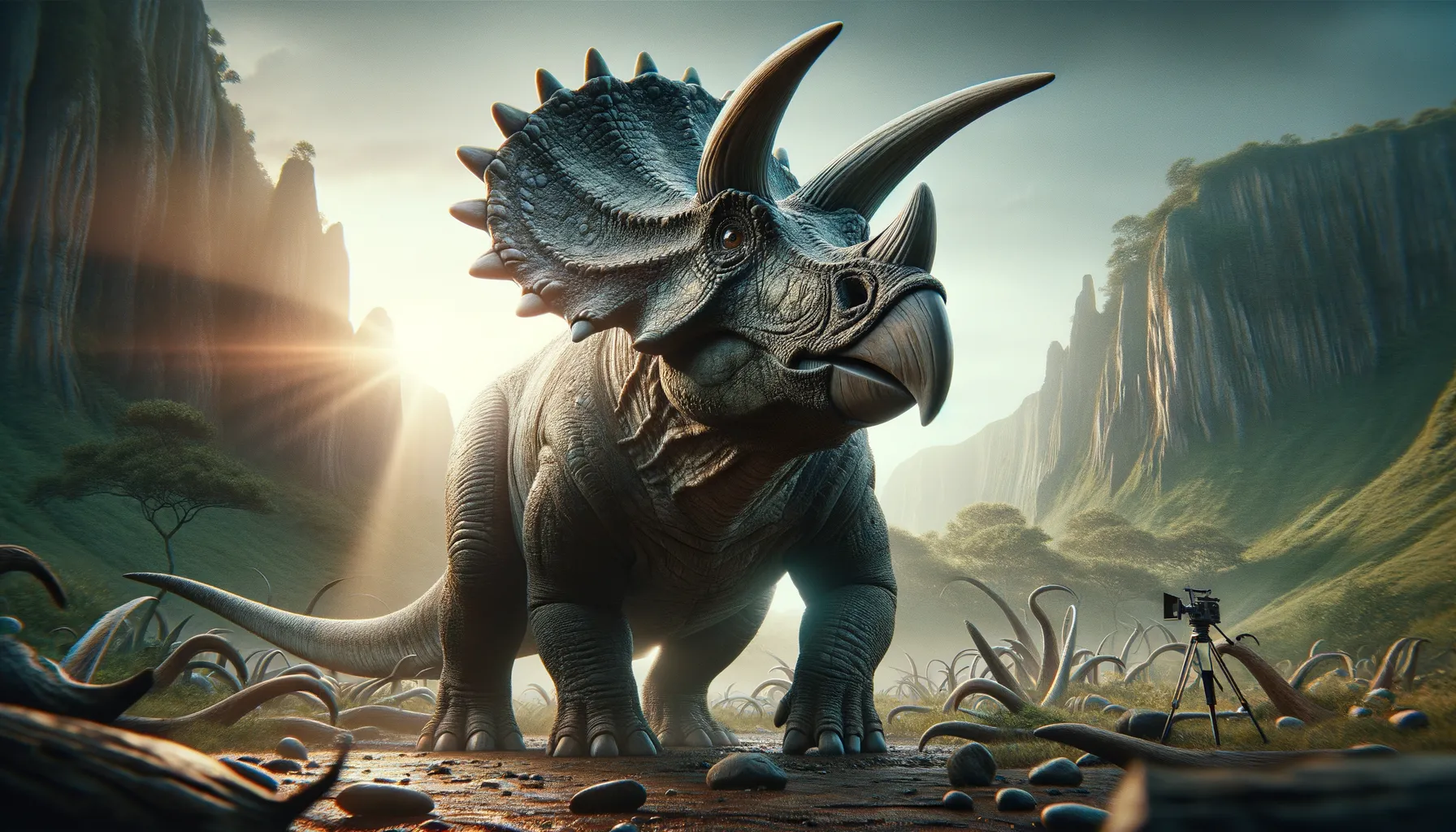
Triceratops
Three horns and a bony frill to protect.
Period
Cretaceous
Length
Triceratops measured around 30 feet in length.
Height
Triceratops stood about 10 feet tall.
Weight
Triceratops weighed about 6 to 12 tons.
Triceratops, easily recognized for its three facial horns and a large bony frill, was a gentle herbivore from the Late Cretaceous period. Known for its formidable defensive features, it roamed the Earth about 68 to 66 million years ago. This dinosaur is often depicted as a social creature that may have moved in herds. Its fossils have been found primarily in North America, offering significant insights into the period just before the mass extinction of dinosaurs.
Diet
Triceratops was a herbivore, primarily feeding on low-lying plants. Its beak-like mouth helped it grasp and pluck vegetation efficiently. Scientists think its diet consisted of ferns, cycads, and palm trees.
Hunting
Triceratops did not hunt as it was not a carnivore. Instead, it foraged for plants alongside other herbivores. It relied on its horns and frill for protection against predators.
Environmental challenges
Triceratops faced various environmental challenges, including predation by large theropods like Tyrannosaurus rex. Its habitat experienced cycles of drought and wet periods, requiring adaptation to different plant availabilities. The shift in climate and volcanic activity also posed a threat. As the Cretaceous period ended, widespread environmental changes gradually became more severe.
Speed
Triceratops was relatively slow-moving.
Lifespan
Triceratops lived approximately 70-80 years.
First discovery
Discovered in the late 19th century in North America.
Fun Facts
- Triceratops was a large dinosaur that roamed North America about 68 to 66 million years ago.
- It had three distinct facial horns and a large bony frill at the back of its head, giving it a timelessly iconic look.
- Despite its fierce appearance, Triceratops was a herbivore and primarily fed on plants.
- Triceratops could grow up to 30 feet long and weigh as much as 12 tons, making it one of the largest ceratopsid dinosaurs.
- Scientists believe the horns and frill might have been used for defense, but also for attracting mates or showing dominance.
- Triceratops fossils are some of the most commonly found dinosaur fossils in North America, especially in places like Montana and Wyoming.
- Though it lived alongside the feared Tyrannosaurus rex, evidence shows Triceratops could defend itself effectively with its horns.
Growth and Development
Triceratops grew from hatchlings into massive adults, undergoing significant changes. Young Triceratops had smaller frills and shorter horns for initial protection. As they matured, their frills and horns became more pronounced, aiding in defense and social interactions. This growth pattern underscores the importance of social behavior and the role of family groups in their development.
Habitat
Triceratops inhabited what is now modern-day North America, primarily in plains and forested areas. They lived in environments rich in vegetation, essential for their herbivorous diet. These regions provided ample food sources and space for forming herds. Seasonal changes in their habitat necessitated migration for food and survival.
Interaction with other species
Triceratops shared its environment with a variety of dinosaurs and prehistoric creatures. Its formidable appearance likely deterred smaller predators and competitors. Interaction with herbivorous species might have included mutual foraging for safety. Predators like Tyrannosaurus rex targeted them, creating a dynamic predator-prey relationship.
Natural lifespan
Triceratops had a natural lifespan of 70 to 80 years.
Reproduction
Triceratops reproduction involved laying eggs like most dinosaurs. It is believed that they nested in colonies, providing some protection to the young. Hatchlings grew relatively quickly, needing to prepare for the dangers of their environment. Parental care might have been involved, although the extent of it is still a topic of research.
Social behaviour
Triceratops likely exhibited social behavior, potentially moving in herds. Herd living provided protection from predators and enhanced foraging opportunities. Dominance hierarchies may have existed, with males possibly using their horns for displays in mating rituals. This social structure could have facilitated better survival strategies.
Fossil locations
Fossils of Triceratops have predominantly been found in North America, especially in Montana and South Dakota. These finds have helped paint a picture of their existence and behaviors. The Hell Creek Formation is notable for yielding numerous Triceratops specimens, providing insight into their life and the environment they once roamed.
